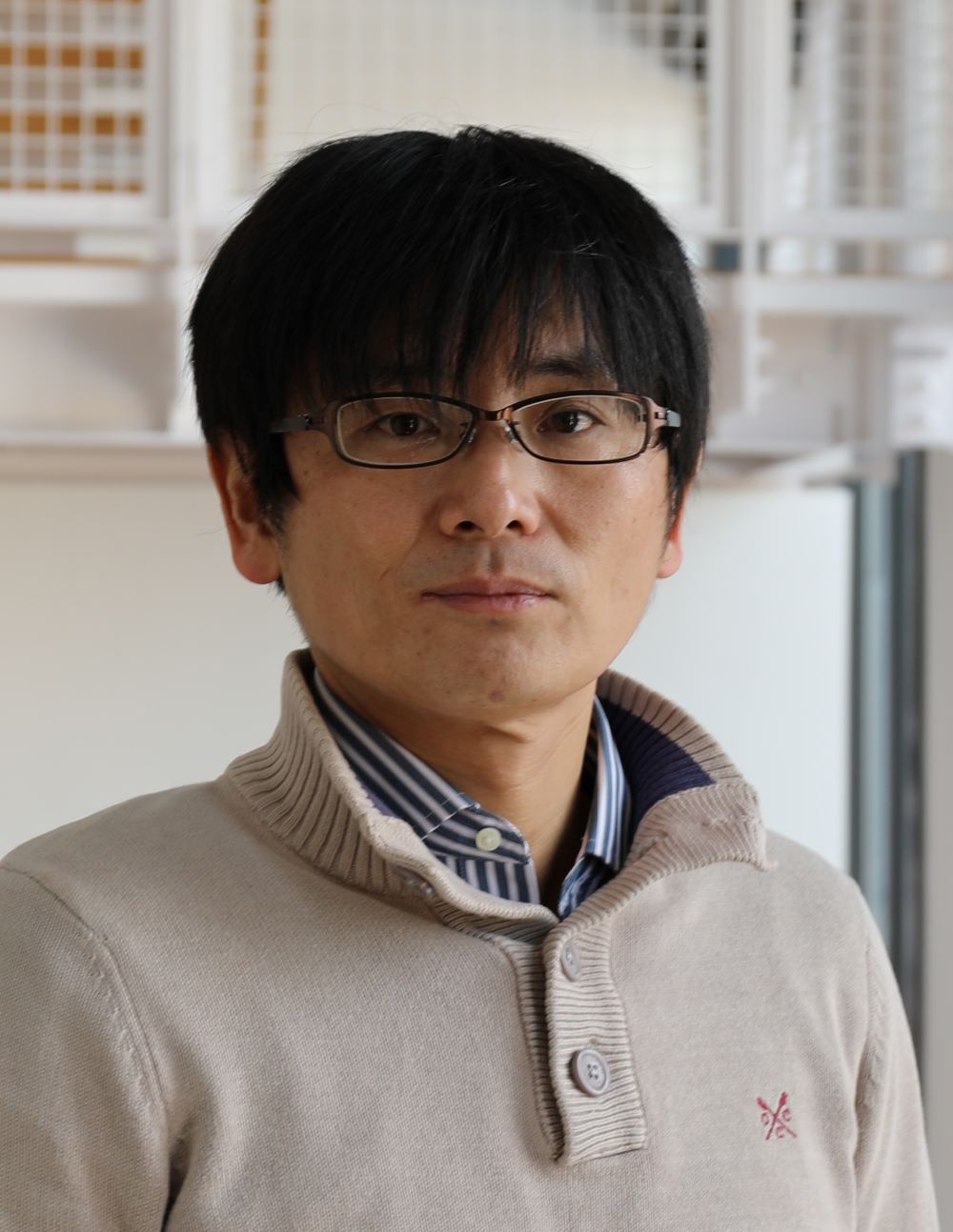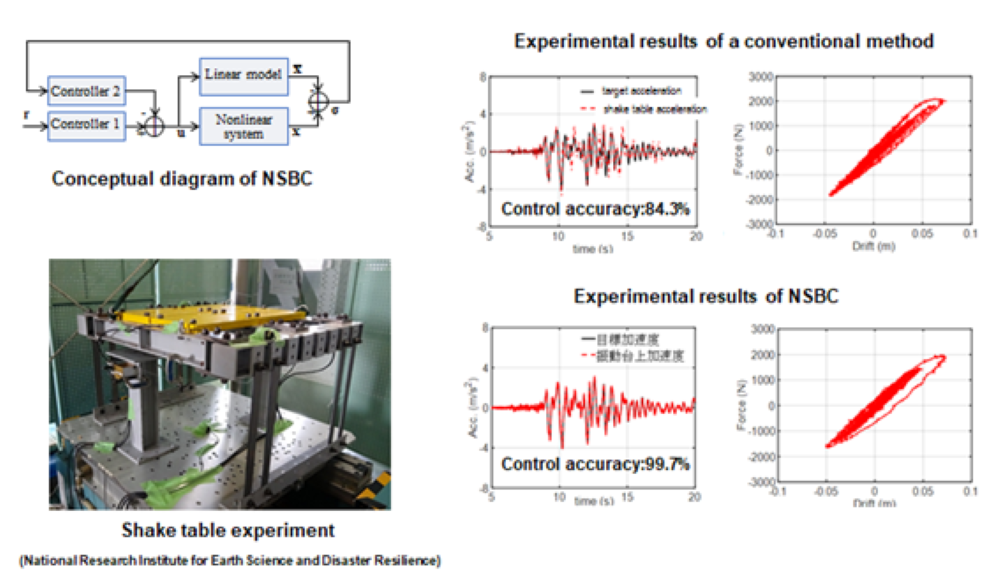2022.1.28
【Academic Research】Research on Shake Tables and High Earthquake-Resistant Structures

Associate Professor Ryuta Enokida
Earthquake Engineering Lab
▷Introduction
Dr.Ryuta Enokida (Associate Professor, IRIDeS) is currently working on research for earthquake-resistant structures with applications of automatic control.
He describes the meaning of “control” as making something move as wanted. He added, “Its example can be found in our daily life. For example, at cooking pasta, we pour a little cold water into a pot when water is about to boil over. This is also control.” In academic fields, however, control approaches are more complicated and sophisticated. Control has been adopted in various academic fields such as mechanics, aerospace, finance, and chemical industries. In the earthquake engineering field, control approaches are used for mitigating the vibration of buildings during earthquakes and for vibration experiments based on seismic data recorded during actual earthquakes in the past.
One of his research subjects is closely related to the vibration experiments using a shake table, which enables us to artificially generate seismic vibration. Recently, he solved one important issue of the shake table by developing a novel control method to improve its performance.
▷Innovations to improve performances of shake tables
In a typical shake table experiment, a structure such as a building is placed on a table, and an earthquake is simulated to examine how much the building is damaged. Then, based on the records taken, engineers explore measures to make buildings stronger.
The shake table experiment had a major issue since the early days of its development. The shake table works properly when the structure is intact, but once some damage appears to the building itself, the structural property changed by the damage jeopardizes the accuracy of the table movement. “The shake table ideally has to produce the intended earthquake excitation stably with high accuracy, no matter what happens on the table. But this was not possible due to technical limitations. Researchers had to accept the experimental results obtained from the inaccurate excitation, especially when the structure was severely damaged, because they had no choices,” says Enokida. Then, he struggled to look for a way to get a shake table to work more precisely. “Some researchers tried to solve this problem based on the idea that they could better control the table if they knew how the structure would get damaged in advance. However, from the practical aspect, this assumption was unrealistic because experiments are performed to examine how structures will be broken by earthquakes. Thus, it was not a final solution.”
He decided to take a completely different approach. “For controlling a shake table more accurately, I came up with a method named nonlinear signal-based control (NSBC), which does not require the assumption on the structural conditions.” When some damage appears to a structure, it has nonlinear dynamics, indicating that its force and deformation are not proportional. In order to control a system with nonlinearity, conventionally, the controller itself also has to have the nonlinearity characteristic to cancel out the nonlinearity in the system. However, Enokida’s new method is based on a completely different concept, and it enables us to control the nonlinear system by a linear control. Through actual shake table experiments, he confirmed that the new method could accurately control the table even after a structure on the table became severely damaged. In an experiment using the seismic record of the 1995 Great Hanshin-Awaji Earthquake, the new method achieved 100% accuracy, whereas a conventional method fell to 84.3%.
Enokida has published these results1) and the method itself is currently being evaluated for a patent. According to him, a key of this development was integrating well what he learned from different engineering fields such as architectural, mechanical, and control engineering.

▷Reactions to the new method
There was a great response at a conference when he introduced this method. However, this did not mean that people immediately shifted from the conventional method to the new one. “Some expense is required for the introduction of the new method. Some people hesitate to change what they have been relying on for a long time. Also, they might be caring about a slight chance of unstable behavior of shake tables caused by its introduction,” says Enokida.
The development of the new method has clearly highlighted limitations of conventional approaches. “Researchers have discussed seismic structural responses obtained from shake table experiments, knowing that the earthquake excitation realized by the table was not necessarily accurate,” says Enokida. Now, NSBC enables us to obtain genuine properties of structures under a specific type of earthquake.
▷What happens when a huge structure is shaken by an earthquake?
As one of further studies on NSBC, Enokida is developing an experimental method to examine properties of huge structures subjected to earthquakes. During shake table experiments, structures exceeding certain limitations (e.g., size or weight) cannot be placed on a shake table. For example, a high-rise building such as the Tokyo Sky Tree cannot be put on the table. Seismic performances of high-rise buildings in Japan are evaluated by numerical simulations, although some other countries examine such buildings by experiments based on those scaled models. If we could evaluate the seismic performance of huge structures through more realistic approaches, we could more reasonably enhance the seismic resistant capacity of the structures.
For this purpose, Enokida is currently working on an experimental technique where only a core part of a building is physically tested and the rest of it is numerically simulated in computation simultaneously integrating data obtained in the real and numerical domain. This technique was originally developed in Japan, and was first implemented in the field of architectural and civil engineering in the 1960s. He has incorporated NSBC into this experimental technique for achieving shake table tests on a huge structure, and its research results have been published in a paper2). By further improving this method, it will be possible to perform a high-rise building experiment at a similar cost of a low-rise building (e.g., two to three stories) on a shake table. “This paper contains many mathematical equations and this may not be something that many people immediately respond to. But it clearly showed some progress on the development of shake table experiments for high-rise buildings,” states Enokida.

▷Working as a “goalkeeper”: minimizing damage from earthquakes for building a resilient society
Ryuta Enokida was born in Shizuoka Prefecture wherein the occurrence of a huge earthquake has been a great concern since the 1970s. When he was an elementary school student, the 1995 Great Hanshin-Awaji Earthquake occurred. This event inspired him to be a researcher on earthquake engineering. However, when he was a doctoral student, he was very shocked by the 2011 Great East Japan Earthquake, and felt depressed about the engineering limitations against such natural hazards. Long after the event, he reached the conclusion that we will never know fully what is useful for future earthquakes. Today, he primarily focuses on studies that he believes are necessary. “Earthquake engineering is expected to think about how to reduce losses by natural hazards, rather than gaining something. It is like a goalkeeper’s job and it does not have a fabulous aspect. But I believe someone has to do this,” he says.
One key aspect to the NSBC development originated from his architectural engineering studies. “If architectural and control engineering are more closely connected with each other, it would be more beneficial to academic fields and industries. Someday, I would like to write a basic textbook focusing on the application of control theory.”;
Some researchers focus on either theory or practice, but he prefers to be involved with both and keep a balance. “Theories and numerical simulations and experiments are supporting each other, and they work well when they are in good harmony, just like an engine and a wheel. I feel very rewarded when results obtained by experiments match with theoretical considerations,” says Enokida. Regarding future work, he will further promote the use of NSBC and accelerate the development of the experimental technique for high-rise buildings. In addition, he is interested in a study to minimize the occurrence of electric power failures even during a huge earthquake.
1)R. Enokida, & K. Kajiwara. Nonlinear signal-based control for single-axis shake tables supporting nonlinear structural systems. Structural Control and Health Monitoring, 26(9), e2376 2019. https://doi.org/10.1002/stc.2376. (This paper was published by Dr. Enokida as a member of the National Research Institute for Earth Science and Disaster Resilience (NIED) before he joined IRIDeS.)
2)R. Enokida, Nonlinear substructuring control for simultaneous control of acceleration and displacement in shake table substructuring experiments, Structural Control and Health Monitoring, 29(2), e2882 2021. https://doi.org/10.1002/stc.2882.
